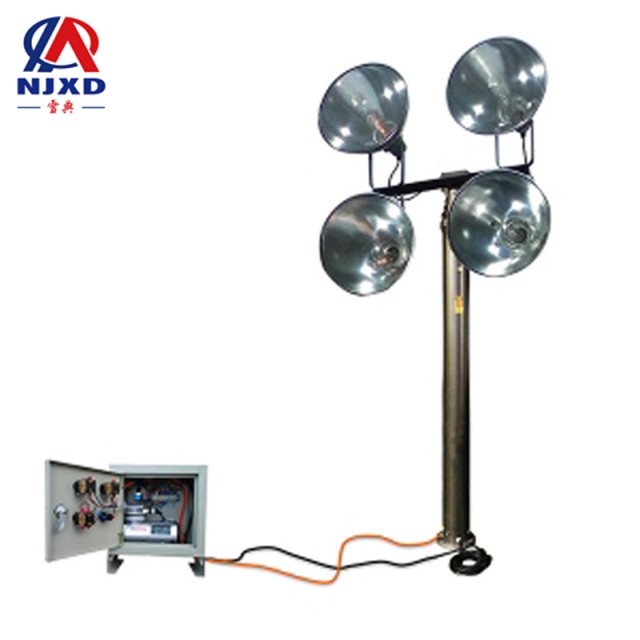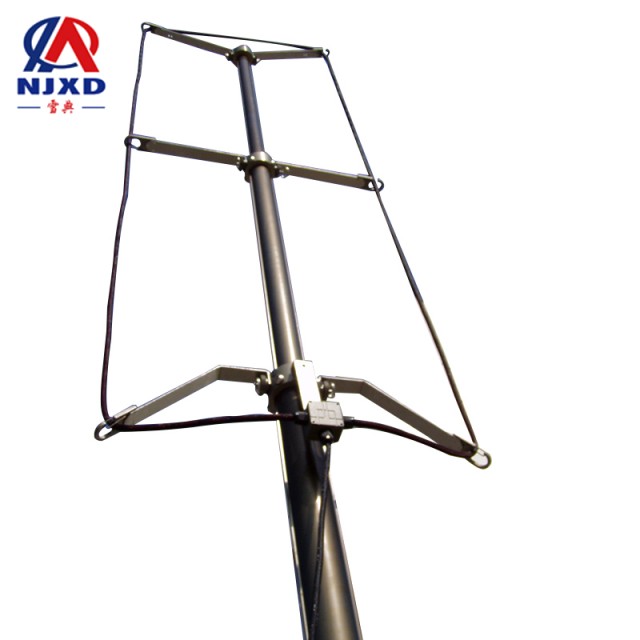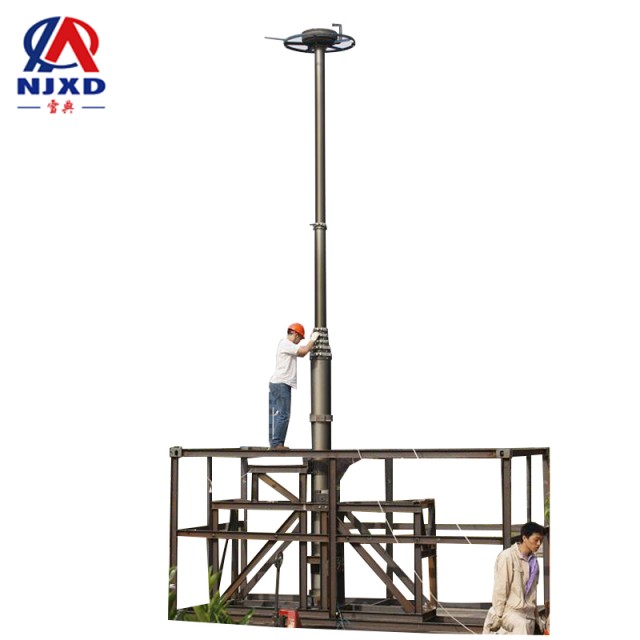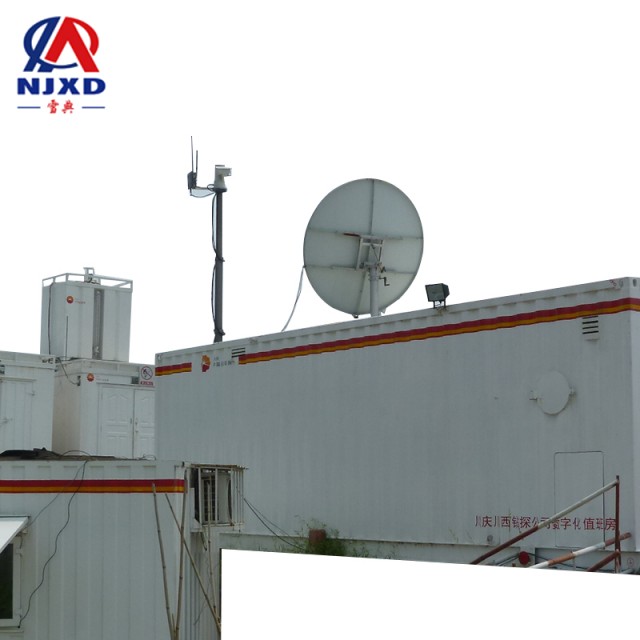NEWS
Basic introduction of radio wave propagation lifting antenna bracket
Time:2021-07-12 View:

Radio waves are affected by the interface between the medium and the medium, resulting in phenomena such as reflection, scattering, refraction, diffraction and absorption.
Basic Introduction
Theory on the propagation process of radio waves in the Earth, Earth's atmosphere and space. Radio waves are affected by the interface between the medium and the medium, resulting in phenomena such as reflection, scattering, refraction, diffraction and absorption, which change the characteristic parameters of radio waves such as amplitude, phase, polarization, propagation direction, etc. Radio wave propagation has formed a branch of electronics, which studies the interaction between radio wave and medium, clarifies its physical mechanism, calculates various characteristic parameters in the propagation process, provide data and materials for scheme demonstration, optimal working condition selection and propagation error correction of various electronic system engineering. According to the principle of radio wave propagation, using radio wave to detect is an effective means to study ionosphere, magnetosphere, etc. Radio wave propagation provides detection methods for the research of atmospheric physics and upper atmospheric physics, accumulates a large number of data, and provides theoretical basis for data analysis.
The spectrum of electromagnetic wave is extremely wide and is a huge resource. The study of radio wave propagation is an important aspect of exploiting these resources. It mainly studies radio waves from several kHz (sometimes far less than 1 kHz) to 3000 GHz, and also studies infrared rays from 3000 GHz to 384 kHz, the propagation of light waves from 384 Tahe to 770 Tahe.
The media involved in radio wave propagation include the Earth (underground, underwater and Earth surface, etc.), the Earth's atmosphere (stratosphere, ionosphere, magnetosphere, etc.), solar-terrestrial space, interstellar space, etc. Most of these media exist in nature, but there are also many artificially generated media, such as rocket flame plasma and plasma generated when aircraft re-enter the atmosphere, which are also the research objects of radio wave propagation. These media have different structures and different electrical characteristics. However, its role in communication can be divided into three types:
① continuous (uniform or uneven) propagation media, such as the stratosphere and ionosphere;
② interface between media (rough or smooth), such as sea surface and ground;
③ discrete scatterers such as raindrops, snow, planes, missiles, etc. can be single or in groups. The characteristics of these media mostly vary randomly with time and space. Therefore, the amplitude and phase of the wave interacting with it also change randomly with time and space. Therefore, the characteristics of media and propagation waves need to be described by statistical methods.

Historical situation
The research on radio wave propagation can be traced back to 1864. In this year, British physicist J.C. Maxwell comprehensively expounded his electromagnetic theory in his paper entitled "dynamic theory of electromagnetic field" proposed to the Royal Society. He proposed the concept of displacement current; Established the basic equations of electromagnetic field-Maxwell equations; Predicted the existence of electromagnetic waves. In 1887, H.R. Hertz in Germany proved by experimental demonstration that the wave emitted by spark discharger exciting a dipole has the same propagation characteristics as light. This is the earliest experimental study of radio wave propagation, which confirmed Maxwell's prediction. In the 1990 s, Russian and Italian G. Marconi conducted several radio wave propagation experiments respectively. In 1901, Marconi received radio signals across the Atlantic Ocean over a distance of more than 3,000 kilometers. At that time, people tried to explain this phenomenon by the diffraction propagation of conductive sphere. The study of this diffraction problem involves extremely complicated mathematical problems. In this regard, L. Riley (1903), J.H. Poincare (1910), H.M. MacDonald (1914) and others made contributions. At that time, the technology could only obtain enough radiation power on long wave, so the experiment was mainly carried out on medium and long wave. Both theory and experiment show that the longer the wavelength, the smaller the diffraction loss.
The discovery of ionosphere is another important milestone in the development history of radio wave propagation. Long-distance experiments at short wavelengths show that the receiving field strength is larger than that calculated by diffraction theory, and the signal has obvious day and night changes. The existence of ionosphere must be assumed to explain these experimental facts satisfactorily. Among them, the most representative is the work of G.N. Watson (1919). After 1924, E.V. Upton and m.a.f. Barnett were in England, and G. Bright and m.a.tov confirmed the existence of ionosphere in America by experimental methods. In 1931, S. Chapman proposed the formation theory of ionosphere. In 1932, the Upton-Hartley formula was put forward and the magnetic ion theory of the system was established. From confirming the existence of ionosphere to around the second world war, extensive research work has been carried out around the propagation of short wave ionosphere.
During World War II, many radars found over-the-horizon targets. At first, people explained this phenomenon with the Waveguide propagation or hyperrefraction effect caused by the anomalous index gradient of the tropopause refraction. In 1946, H.G. Booker and W. Wakinshaw systematically expounded the propagation theory of the tropopause waveguide. The influence of the stratosphere on radio wave propagation has begun to be paid attention.
With the continuous accumulation of experimental data, people find that in addition to the occasional signal caused by anomalous propagation in the tropopause, there is also an over-the-horizon signal with weak intensity but often exists. This phenomenon cannot be explained by diffraction propagation or hyperrefraction effect. In 1950, Booker and W.E. Gordon published the stratosphere scattering theory, starting a new era to study the influence of random heterogeneity of media on radio wave propagation. Under the influence of the theory of radio wave scattering propagation in the tropopause, the ionosphere scattering propagation and meteor trail radio wave scattering propagation are also found. In 1958, Gordon put forward the incoherent scattering theory of free electrons on radio waves. This theory was soon confirmed by experiments, and a new era of using high-power radar to detect the Earth's atmosphere appeared.
After 1970 s, the frequency of radio wave propagation research extended to both ends of high and low. At the low end, study the propagation of extremely low frequency; At the high end, carry out research on the propagation of radio waves above 10 GHz. Researches on atmospheric absorption, precipitation influence, depolarization and target scattering characteristics have been vigorously carried out, many theoretical models have been established, and inversion theory has also achieved rapid development.
In the study of radio wave propagation, extensive international cooperation has been carried out on the study of propagation media. In order to coordinate and promote the development of radio wave propagation, a special research organization has been set up internationally. In the International Radio Advisory Committee (CCIR), there are group 5 "propagation in non-ionized media" and group 6 "propagation of radio waves in ionized media"; In the International Union of Radio Science (URSI) there are committee F "remote sensing and wave propagation" and committee G "ionosphere radio and propagation", etc.
China began to probe the ionosphere in Shanghai as early as 1936. From 1937 to 1938 in Wuchang, in 1944 in Chongqing, the ionosphere was observed with self-made instruments for a long time. Chongqing railway station has been continuously observed since August, 1945and Wuchang Railway Station since August, 1946. After the founding of the People's Republic of China, observation stations such as Manzhouli, Changchun, Urumqi, Beijing, Lanzhou, Guangzhou and Haikou were built successively, forming an Ionosphere Observation Network. Since 1956, China has carried out the study of the propagation of the tropopause scattering; In May 1957, the first test circuit of the propagation of the tropopause scattering was built. In the following 10 years, a lot of experiments and theoretical work have been carried out. China has also carried out research on whistle propagation and received whistle signals in the Xisha Islands at low latitude in 1983. At present, China radio wave propagation Research Institute, which specializes in radio wave propagation research, already has a theoretical and testing team, which has carried out research on propagation theory, medium structure, engineering application and other aspects, the research ranges from very low frequency to dozens of gigs. Colleges and universities have set up radio wave transmission major successively since the 1950 s, training a large number of specialized talents in this field.

Research methods
The study of radio wave propagation has always been carried out by two methods: theory and experiment. With the development of computer technology, computer simulation has become an independent research method. The study of radio wave propagation mainly includes three research methods: theoretical research, experimental observation and computer simulation.
Theoretical research
Radio wave propagation mainly studies the interaction process between medium and radio wave. Sometimes the characteristics of media can be characterized by several parameters, and although these parameters may have regular and random changes in time and space, they do not change due to the existence of radio waves. At this time, when using theoretical methods to study the problem of radio wave propagation, we can use certain mathematical models to describe the temporal and spatial changes of the medium or the boundary surface of the medium according to the physical model of the medium, the study of propagation characteristics is attributed to the mathematical problem of solving electromagnetic equations. The choice of media model first depends on people's understanding of media structure and media characteristics; However, when dealing with practical problems, it is more important to consider the rationality of the model and the practical possibility of solving equations. For a reasonable model, if analytical solution or numerical solution can be obtained, this method is effective for understanding the propagation mechanism and generally understanding the propagation characteristics. Due to the limitation of experimental work, this kind of theoretical knowledge is very necessary to guide the analysis and processing of experiments and test data. However, when dealing with problems, the model must be idealized to different degrees, which is different from the actual medium, and only a small number of problems can obtain analytical solutions, therefore, the specific application of theoretical research results has certain limitations. In some cases, the characteristic parameters of media are related to the existence of radio waves. For example, the propagation in the ionosphere is like this, and the theoretical problems become more complicated. On the other hand, when the main relationship between media characteristics and propagation characteristics is clarified, it is possible for people to reverse the characteristics of media or media interface according to the known propagation characteristics. This kind of inversion problem is also an important aspect of theoretical research. Inversion Theory is an important theoretical basis of remote sensing technology.
Experimental observation
Because the structure and characteristics of natural media are very complex and change randomly with time and space, it is difficult to obtain accurate data that can be used for engineering applications by theoretical methods. Therefore, the experimental observation method has always been the most basic method of radio wave propagation research. Through a large number of field observations, radio wave propagation research detects the structure of the medium, monitors the changes of the medium, accumulates data of propagation characteristics, and summarizes the laws of radio wave propagation. Radio wave propagation observation is generally carried out in actual environment and representative different regions. Experiments in the same region need to accumulate long-term data to reflect the variation rules of propagation characteristics and medium characteristics with time and space. This is an important feature of radio wave propagation experiment. Of course, because the radio wave propagation experiment can only be carried out in limited time and space, and also because the experiment is carried out under natural conditions, the factors affecting the propagation are not controlled, you may encounter difficulties in processing test data. In order to sum up the relatively applicable rules from the limited test results, theoretical guidance and theoretical analysis are very necessary.
Computer simulation
With the development of computer and computing technology, computer can be used to simulate the change and propagation process of medium characteristics. It can partially overcome the limitations brought by the idealization of media model and the difficulty of solving equations in theoretical methods. At the same time, it can also partially make up for the shortage that the observation experiment method needs to consume a lot of manpower, material resources and time, which is a research method with great development prospects.
Of course, when conducting radio wave propagation research, some methods are often not used alone. Each method is short and long, and it is often necessary to combine and use, cooperate with each other and complement each other.
